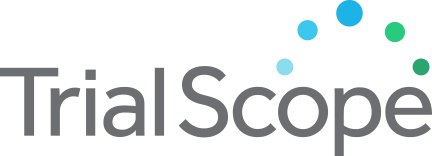Donor Stem Cell Transplant With Treosulfan, Fludarabine, and Total-Body Irradiation for the Treatment of Hematological Malignancies
Study Purpose
This phase II trial studies how well a donor stem cell transplant, treosulfan, fludarabine, and total-body irradiation work in treating patients with blood cancers (hematological malignancies). Giving chemotherapy and total-body irradiation before a donor stem cell transplant helps stop the growth of cells in the bone marrow, including normal blood-forming cells (stem cells) and cancer cells. It may also stop the patient's immune system from rejecting the donor's stem cells. When the healthy stem cells from a donor are infused into the patient, they may help the patient's bone marrow make stem cells, red blood cells, white blood cells, and platelets. The donated stem cells may also replace the patient's immune cells and help destroy any remaining cancer cells.
Recruitment Criteria
|
Accepts Healthy Volunteers
Healthy volunteers are participants who do not have a disease or condition, or related conditions or symptoms |
Yes |
|
Study Type
An interventional clinical study is where participants are assigned to receive one or more interventions (or no intervention) so that researchers can evaluate the effects of the interventions on biomedical or health-related outcomes. An observational clinical study is where participants identified as belonging to study groups are assessed for biomedical or health outcomes. Searching Both is inclusive of interventional and observational studies. |
Interventional |
| Eligible Ages | 6 Months and Over |
| Gender | All |
Trial Details
|
Trial ID:
This trial id was obtained from ClinicalTrials.gov, a service of the U.S. National Institutes of Health, providing information on publicly and privately supported clinical studies of human participants with locations in all 50 States and in 196 countries. |
NCT04195633 |
|
Phase
Phase 1: Studies that emphasize safety and how the drug is metabolized and excreted in humans. Phase 2: Studies that gather preliminary data on effectiveness (whether the drug works in people who have a certain disease or condition) and additional safety data. Phase 3: Studies that gather more information about safety and effectiveness by studying different populations and different dosages and by using the drug in combination with other drugs. Phase 4: Studies occurring after FDA has approved a drug for marketing, efficacy, or optimal use. |
Phase 2 |
|
Lead Sponsor
The sponsor is the organization or person who oversees the clinical study and is responsible for analyzing the study data. |
Fred Hutchinson Cancer Center |
|
Principal Investigator
The person who is responsible for the scientific and technical direction of the entire clinical study. |
Filippo Milano |
| Principal Investigator Affiliation | Fred Hutch/University of Washington Cancer Consortium |
|
Agency Class
Category of organization(s) involved as sponsor (and collaborator) supporting the trial. |
Other, Industry |
| Overall Status | Recruiting |
| Countries | United States |
|
Conditions
The disease, disorder, syndrome, illness, or injury that is being studied. |
Acute Leukemia, Acute Lymphoblastic Leukemia, Acute Myeloid Leukemia, Adult Diffuse Large Cell Lymphoma, Anaplastic Large Cell Lymphoma, Burkitt Lymphoma, Chronic Myeloid Leukemia, BCR-ABL1 Positive, Chronic Myelomonocytic Leukemia, Hodgkin Lymphoma, Lymphoblastic Lymphoma, Lymphoplasmacytic Lymphoma, Mantle Cell Lymphoma, Mixed Phenotype Acute Leukemia, Myelodysplastic Syndrome, Prolymphocytic Leukemia, Refractory Chronic Lymphocytic Leukemia, Refractory Follicular Lymphoma, Refractory Marginal Zone Lymphoma, Refractory Small Lymphocytic Lymphoma |
Contact a Trial Team
If you are interested in learning more about this trial, find the trial site nearest to your location and contact the site coordinator via email or phone. We also strongly recommend that you consult with your healthcare provider about the trials that may interest you and refer to our terms of service below.
Site by: Kaleidoscopic

